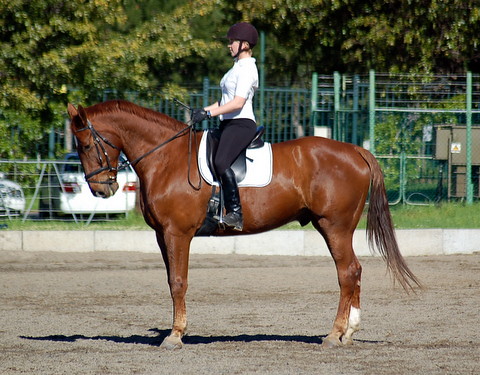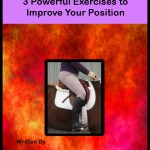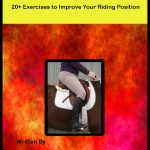Dressge Horse Training – Top Three Things That Go Wrong with Your Square Halt When Training Your Dressage Horse

![]() photo credit: andreavallejos
photo credit: andreavallejos
When performing your dressage horse training one of the most ellusive movements is a square halt. If your halt is not well defined and performed correctly, it will put a bad flavor in the dressage judges ‘mouth’. There are a handful of things that can go wrong. Here are the top 3 errors that dressage judges do not want to see in the competition ring.
Top Three Things That Go Wrong with Your Halt
Number 1 – Horse Not standing Still
While halted during your dressage test, your horse should be motionless. This means no:
- head tossing
- fidgeting
- moving legs
- stepping forward/backward
To prevent your horse from moving, make a halt a part of your dressage horse training. If, as a horse trainer, you include it as part of your regular routine, then the halt will not be a rest period where the horse can goof around, but rather a dressage movement.
While riding use your legs softly against the horse’s sides and keep the horse at attention to prevent fidgeting and moving. Re-inforce positive actions with ‘good boy/girl’ so the horse understands that standing still is required.
Number 2 – Horse Not Square at the Halt
While halted the dressage horse should keep equal weight in each leg. It is important to have a square halt so the dressage horse will be able to perform a quality upward transition from the halt. If your horse is not engaged through the halt, your upward transition will be sloppy and the horse will not be able to use himself properly. Improving your horse’s engagement will help prevent the following:
- Hindleg or hindlegs left behind
- forelegs not vertical
- hindlegs wide
- horse is crooked
If your horse is not truely engaged he is likely to leave a hindleg out behind or halt in a crooked fashion. The dressage judge wants to see the centre line of the dressage arena be right in the middle of the horse’s chest. The horse should stand with each leg equal distance from the centre line. If you horse stops crookedly, then one leg may be closer or even on the centre line.
Continue to ride and strengthen your horse by performing transitions and riding your horse forward to strengthen the horse’s hindquarters. By strengthening your horse’s hindquarters and hocks, it will help develop a square and balanced halt.
Number 3 – Horse is Resisting the Bit at the Halt
Sometimes, as you perform your halt, horses root and pull at the reins to help balance themselves through the transition. The horse should remain in balance with his poll the highest part with his nose slightly in front of the vertical. The horse should remain attentive and supple through his whole body including his mouth and neck.
If you pull the horse to stop, it will balance and pull back on you. Rather than pulling back to a halt, thisnk of pushing your horse forward to a halt. This way you will continue to ride your horse forward and will encourage the horse to keep his hind legs engaged underneath him.
 Try these three powerful exercises to get strengthen your position.
Try these three powerful exercises to get strengthen your position.

Quite an interesting read…i like your angle on it. This is definitely an eye opener. Thanks for bringing it to my notice. Nice blog though…